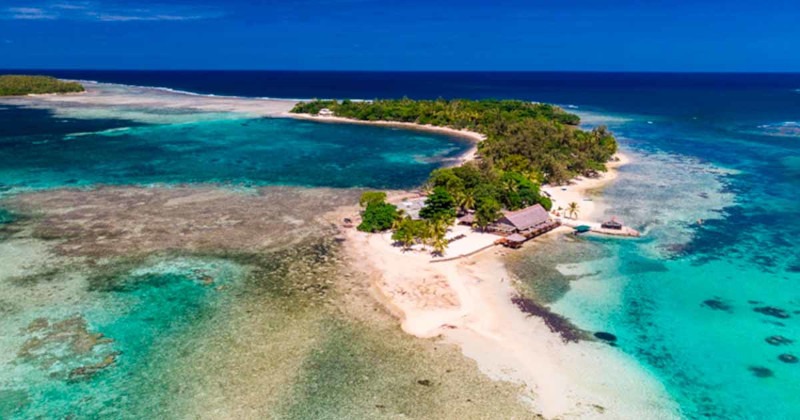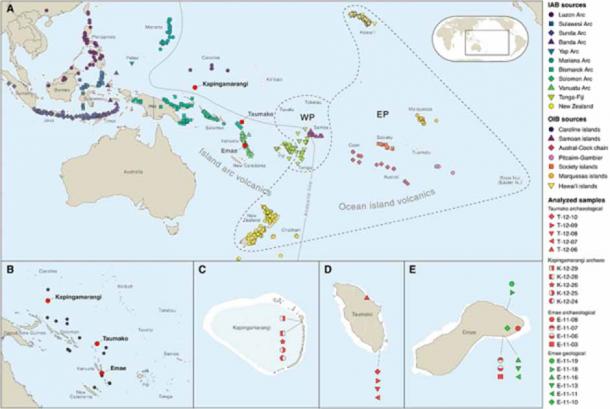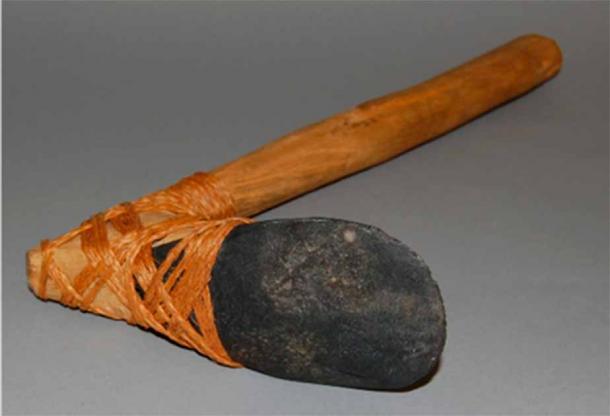
Richard Butler | Exclusive Report by Nathan Falde of Ancient Origins | APRIL 25th, 2023
Applying a form of highly technical analysis known as geochemical fingerprinting to centuries-old stone artifacts, a team of scientists from France, Germany and the island nation of Vanuatu were able to reconstruct the movements of peoples living in the islands of the Western Pacific in the second millennium AD. They discovered that Polynesian seafarers traveled between the various islands of Oceania quite frequently, which ultimately helped encourage the migration of Polynesian people from the central Pacific to islands in the Remote Oceania region, which was more than 1,500 miles (2,500 kilometers) distant from their homeland.
The Remote Oceania islands occupied by Polynesians have been labeled the ‘Polynesian Outliers.’ The migrations that brought Polynesians to these far-off places began between 1,000 and 700 years ago, and constituted an amazing feat of seafaring skill and courage.
“Our study demonstrates the navigational skills of Pacific Island societies before European contact and emphasizes patterns of mobility in relation to settlement and post-settlement phases in the Polynesian Outliers,” the study authors wrote in a paper just published in Science Advances . “The transfer of Samoan adzes [stone axe heads] produced in the same quarry on the island of Tutuila [a Polynesian island in American Samoa] in two different Outlier islands supports the view that the Outliers were settled from the West Polynesian homeland.”
The interdisciplinary team of scientists involved in this study included experts on Western Pacific island history, culture, archaeology, anthropology and geography. They were affiliated with the French National Center for Scientific Research in Paris, the Max Planck Institute for Evolutionary Anthropology in Leipzig, Germany, and the Vanuatu Cultural Center in the city of Port-Vila (Vanuatu is a modern nation comprised of 80 separate islands in Remote Oceania). They hope the results of their geochemical investigation will lead to “an overall reappraisal of long-distance mobility at a time when Polynesians were sailing across the western Pacific.”
- Genetic Evidence Suggests a Denisovan Presence in the Pacific Islands
- Homo Sapiens African Migration Occurred When the Climate Was Good
Polynesian Travelers Bring Changes to Westernmost Oceania
Remote Oceania is comprised of a vast collection of small and medium-sized islands that are mostly found within 2,500 miles (4,000 kilometers) of the eastern coast of Australia. The majority of these islands were originally settled between 5,000 and 3,000 years ago, by people who migrated from Southeast Asia and other areas to the north and west.
However, several islands in Remote Oceania were also peopled by the ancestors of the modern Polynesians, who apparently weren’t intimidated by the long distances they had to sail to arrive there.

It is known that the Polynesians arrived in Remote Oceania at different times during the second millennium AD. Their earliest settlements were in the Solomon Islands , specifically on the islands of Anuta and Tikopia, where they first landed sometime between the 10th and 13th centuries. Multiple waves of settlers followed, and the last of the westward-sailing Polynesian pioneers arrived on the island of the Nukuoro in the Federated States of Micronesia in the 18th century.
This general outline has been established by past archaeological digs and historical study. But exact details about the Polynesian westward migration have been hard to obtain. That’s why the results of this latest study are so groundbreaking.
For the purposes of this research, the researchers relied on geochemical sourcing to identify the original sources of stone artifacts recovered from Vanuatu, the Solomon Islands and the Caroline Islands during excavations from 1978 to the present. The techniques they used include atomic emission spectroscopy and mass spectrometry, which allow for the identification of the so-called “geochemical fingerprints” that link stone used to make tools or weapons with specific geographic locations.
The researchers focused much of their analysis on several axe heads and axe head fragments, which in a Polynesian context are known as adzes. Out of eight Polynesian adzes they studied, six were revealed to have come from a large quarry complex known as Tatagamatau, which is located more than 1,500 miles (2,500 kilometers) across the ocean to the east, on the American Samoan island of Tutuila.
“Tatagamatau adzes were among the most disseminated items across West and East Polynesia, and the sourcing of Taumako [Solomon Islands] and Emae [Vanuatu] adzes suggest bursts of long-distance mobility towards the Outliers similar to those that led to the settlement of East Polynesia,” study lead author Aymeric Hermann, a researcher affiliated with both the French National Center for Scientific Research and Max Planck Institute for Evolutionary Anthropology, stated in a Max Planck Institute
Hermann noted that these particular tools were highly prized items in the Polynesian culture that were often passed down for several generations. Colonists traveling from the east would have carried them across vast distances, as a way to maintain a connection with their homeland and their ancestors.
In addition to establishing a link between the Outliers and American Samoa, the results of this study has also shed new light on inter-island transfers between Polynesian Outlier societies and their indigenous neighbors. The discovery of items manufactured by other people living on other islands in the region, who got their stone from Remote Oceania sources, reveals how Polynesian sailors likely facilitated the development of trade networks that crossed ethnic and cultural lines. They apparently traveled around the region of Remote Oceania a lot, passing items back and forth between their people and everyone else they encountered.

Adze, from Samoa, Polynesia
Polynesian seafaring developed highly accurate navigational techniques and strategies, which allowed them to range far and wide across the Pacific hundreds of years before the Europeans arrived in the Americas. By all accounts most of their interactions with others were friendly and often commercially oriented.
- Was there a Common Writing System used by Pacific Islanders?
- Study Points at Hidden Human History Submerged On ‘Aquaterra’
Building a Peaceful Seafaring Empire
The level of mobility in the Western Pacific in the first half of the second millennium was higher than had previously been realized, and opened the doors for a complex pattern of settlement that brought a multicultural element to the islands of Remote Oceania.
The continuous movements of Polynesian settlers to the west suggests they coexisted peacefully with their neighbors. They constructed a vibrant and unified culture that was able to spread both its population and influence over an extensive distance, thanks to their advanced seafaring skills and their fascination with exploring.





